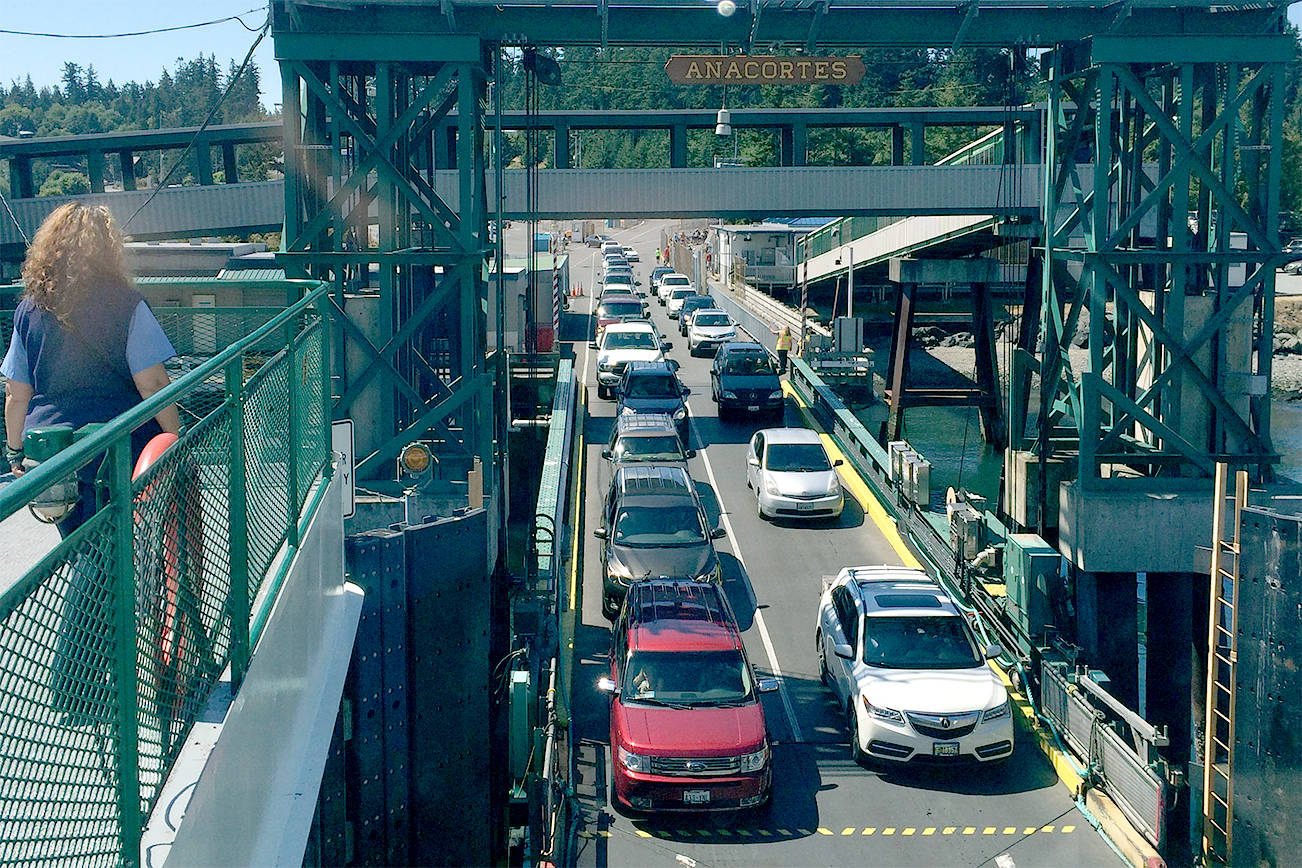The ferries occasionally running behind in the summer is something islanders are accustomed to, however, it has become a common occurrence this year.
“We’re aware that the current COVID-19 response schedule results in delays on the Anacortes/San Juan Island routes,” Washington State Ferries Spokesperson Ian Sterling told the Journal. “The cause is primarily due to fewer boats on the route and a schedule that was based on winter traffic volumes. Now that ridership has increased some, crews are finding it a challenge to unload and load all the vehicle traffic in the time allotted. This leads to delays that compound throughout the day.”
According to Sterling, WSF is looking into how it can reduce these delays and has a plan to restore service when and wherever possible. The plan Sterling referred to is the COVID Response Service Plan, available for reading at https://www.wsdot.wa.gov/Ferries/assets/WSF-COVIDResponseServicePlan.pdf.
“It’s important to note that this is not a normal year and from airlines to bus service to ferries, passengers should not expect normal service levels while most of the state’s population remains under essential travel only advisories,” Sterling said.
San Juan County Ferry Advisory Committee Chairperson Jim Corenman explained that many senior WSF employees are at high-risk of COVID-19 complications. WSF’s Eagle Harbor Maintenance Facility was also closed during the Stay Home, Stay Safe orders and WSDOT employees were also furloughed one day per week during the month of July, he added.
The San Juan Route remained on its winter schedule, while Bainbridge, Bremerton and Port Townsend all saw their schedules cut in half, from two boats to one, Corenman said. Mukilteo-Clinton and Edmons-Kingston routes were reduced to half service on the weekends, he explained.
“Ferries established four ‘pillars,’ metrics which would guide a return to normal service: Ridership, of course, also crew and vessel availability, and budgets,” Corenman said. “Ridership on our routes is back up to about 75 percent of typical summer levels, but that is only the ‘demand’ side of the equation.”
Corenman explained that vessel availability is improving as maintenance catches up and that budgets are OK for now. The big limitation has been crew availability, he said.
“With face masks now a requirement and compliance improving, crews that have been on leave are starting to come back,” Corenman said. “But there is still a long way to go before anything like regular service can be restored. And of course, this virus is not over by any measure.”
The continued winter schedule has also caused a big problem for the San Juans Route, according to Corenmen.
“It’s fine in mid-winter with half-full boats, but full boats take twice as long to unload and load, and the scheduled dwell-times at each terminal are too short by half. Which means the boats lose 10-20 minutes every trip, which turns into two-plus hours by the end of a busy day,” Corenman said. “When boats are full reservations are critical, but the 30-minute cutoff — prior to scheduled departure — translates into hours of waiting.”
Since Anacortes’ terminal staff is working on the reduce winter works schedules, Corenman explained that the alerts going out to riders urge them to arrive 60-90 minutes prior to the scheduled departure time.
Corenman suggested options to help with the schedule demands.
“As additional crew becomes available, service can be added,” Corenman said.
The Friday schedule can be also be run Monday through Thursday, Corenman explained. This would ensure all three mainland boats work in the afternoon. He also said the interisland boat could run on the weekends — which is something it doesn’t do during the winter schedule.
“And staff can be added at Anacortes to handle the traffic,” Corenman said. “But the very top of our list is to find a way to adjust the reservations cutoff when the boats are late.”
Since the boats could be delayed by several hours, asking riders to arrive 30 minutes before the scheduled sailing time could “make anyone crazy,” Corenman said. The time could be adjusted to accommodate the vessel’s anticipated late arrival, he added.
WSF held a public virtual meeting on June 30 to update ferry-served communities on the status of the state transportation agency. During that meeting, the agency outlined the four pillars Corenman mentioned as being a requirement for WSF to return to its normal, more predictable, service levels.
“When we have all four of the things aligned — and it’s not a date, it is when we have more vessels, more employees, more ridership and more funding — that’s when we can increase service,” Scarton said on June 30.




